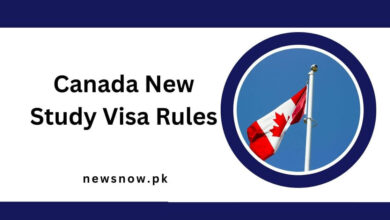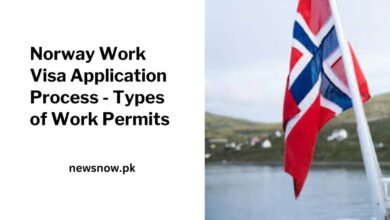Australian Work Visa – Type of Visa
There are numerous thrilling opportunities for individuals who aspire to advance in their professions through the Australian Work Visa. Australia offers a variety of work visas, including both temporary and permanent status. The objective of this comprehensive guide is to simplify the process of comprehending and navigating the distinctions between sponsored and non-sponsored visa types for all individuals, regardless of their level of experience or professional background.
If you want to move to Australia, you need to know about the different types of work visas that are available right now. People can use this guide as a map to help them find their way around the complicated Australian job market. This resource makes it easier to understand, apply for, and do well in the Australian job market, whether you are new to the country or an experienced worker looking for a fresh start.
Australia has a variety of work visa choices for professionals, and it’s important to know how to use them all to your advantage. This guide will show you the steps and explain the different parts of the Australian work visa system. This will make your path to professional growth in Australia easier and more well-informed.
Australian Work Visa Types: Navigating Your Path
| Type of Work Visas | Job offer/Sponsorship Required? |
|---|---|
| Skilled Independent visa (subclass 189) | No |
| Skilled Regional visa (subclass 887) | No |
| Temporary Graduate visa (subclass 485) | No |
| Skilled – Recognised Graduate visa (subclass 476) | No |
| Skilled Regional (Provisional) visa (subclass 489) | No |
| Regional Sponsor Migration Scheme (subclass 187) | Yes |
| Employer Nomination Scheme visa (subclass 186) | Yes |
| Skilled Nominated visa (subclass 190) | Yes |
| Temporary Skill Shortage visa (subclass 482) | Yes |
| Business Innovation and Investment (Provisional) visa (subclass 188) | Yes |
Is There an Age Limit for a Work Visa?
You have to be a certain age to get most job visas. Some people can get a work visa even if they are over 50 or under 45. For some work visas, however, there is no age limit. This will depend on the type of work visa you are asking for.
Read Also: Australian Study VISA – Visit Here
Australia Work Visa Processing Times
It takes about a year or two to handle most work visas. But keep in mind that the working time isn’t a given, and the length of the review period will depend on a lot of things.
It may only take a few months to process some short-term visas, and it may be even faster for some types of visas. The process time is always longer if something is missing from your application, no matter how long it takes.
Benefits of Australian Work Visa
- Employment Prospects in a Growing Economy: There are numerous opportunities in industries such as healthcare, information technology, engineering, construction, education, and agriculture in Australia, which boasts a robust and stable economy. A work visa enables individuals to access these employment markets, which can be particularly beneficial for skilled workers who are seeking to advance their careers.
- Route to Permanent Residency and Citizenship: Pathways to permanent residency are available through numerous Australian work visas, particularly skilled migration visas (e.g., the Skilled Independent Visa – Subclass 189 or the Employer Nomination Scheme – Subclass 186). After a specified period, permanent residency can result in Australian citizenship, which offers long-term security and additional benefits.
- Access to a High Quality of Life: Australia is recognized for its exceptional quality of life, which is reflected in its high rankings in the areas of healthcare, education, infrastructure, and environmental integrity. Australia’s exceptional healthcare services, secure cities, and generally high standard of living are accessible to individuals and their families with a work visa.
- Opportunity to Involve Family Members: Applicants are permitted to include family members, including dependent children and spouses or companions, in their visa applications for the majority of Australian work visas. This implies that families are able to relocate and reside together, as well as access health and education services and experience comparable benefits.
- Access to Australia’s World-Class Healthcare System: The Medicare system, Australia’s public healthcare initiative, is highly regarded for its quality and accessibility, and many work visas in the country provide access to it. This access has the potential to substantially reduce healthcare costs and offer peace of mind to visa holders and their families.
- Access to Student Loans and Quality Education for Children: The children of visa holders are permitted to attend public institutions in Australia, frequently at a reduced or no cost, using an Australian work visa. The financial burden of university studies is significantly alleviated by the ability to access government-backed student loans (HECS-HELP) for tertiary education if the visa holder ultimately becomes a permanent resident.
- A Welcoming Society and Cultural Diversity: Australia is a multicultural society that boasts a diverse array of cultural activities, traditions, and languages. The nation is recognized for its inclusive approach to immigrants, which fosters a sense of acceptance among newcomers. This diversity cultivates a vibrant, diverse environment that is frequently more hospitable to individuals from other countries.
- Independence to Travel Within and Outside of Australia: During the duration of the visa’s validity, numerous Australian work visas permit travelers to enter and exit the country. For individuals who have family members living abroad or desire the freedom to travel internationally for business or pleasure while maintaining a work visa, this adaptability is advantageous.
- Skill Development and Networking: Visa holders are able to develop international professional networks, acquire exposure to advanced industry practices, and improve their skills by working in Australia. This experience can be invaluable for career development and can give you a competitive edge in future employment opportunities, both within and outside of Australia.
- Potential for Employer Sponsorship: Employers are permitted to sponsor experienced foreign workers for positions that are unfilled locally under certain Australian work visas, including the Temporary Skill Shortage – Subclass 482. Employer-sponsored visas frequently result in long-term employment opportunities and may offer pathways to permanent residency if the employer continues to sponsor the visa holder.
How Much Does a Work Visa Cost?
A work visa for Australia costs between AUD315 and AUD4,115. Depending on which stream you apply for, you may not have to pay the visa fee at all for a certain category. There are, however, extra fees that you need to pay for most cards. One example is that you have to pay extra fees for each family member who applies with you. For some visas, you even have to pay a second fee for family members whose English isn’t good enough. This is where you can find the full fees.
Conclusion
Anyone wanting to improve their career in Australia needs to know about the different types of Australian work visas and what they require. This guide gave an in-depth look at both temporary and permanent visas, as well as choices that are sponsored and those that are not. As long as applicants follow the steps listed and understand the differences between each type of visa, they will be able to confidently navigate the complicated Australian job market, whether they are newcomers or seasoned professionals. Using this guide will help the application process go more smoothly and make the move to working in Australia go more smoothly.
Frequently Asked Questions
What are the main types of Australian work visas?
There are both sponsored and non-sponsored work visas. Key types include the Skilled Independent Visa (subclass 189), Skilled Regional Visa (subclass 887), Temporary Graduate Visa (subclass 485), and Employer Nomination Scheme Visa (subclass 186).
Do I need a job offer to apply for an Australian work visa?
Some visas, like the Skilled Independent Visa (subclass 189), do not require a job offer. However, others, such as the Employer Nomination Scheme Visa (subclass 186), do require a job offer or sponsorship.




